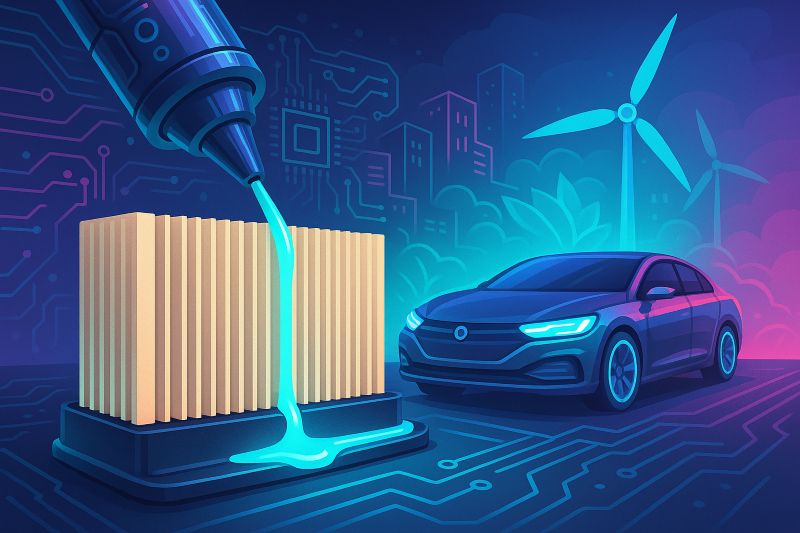
Innovative Adhesives: An Overview
Types of Adhesive Technologies
Significance in Automotive Filters
Methods of Adhesive Application
Trends in Adhesive Innovations
Strategic Advantages of Adhesives
Future of Adhesive Technologies
In the pursuit of enhanced performance, automotive filters are undergoing rapid innovation, and advanced adhesives play a pivotal role in this transformation. These adhesives improve durability, heat resistance, and overall stability, ensuring filters can withstand extreme operating conditions. With high thermal endurance and chemical compatibility, modern adhesive technologies provide critical support in maintaining the integrity and efficiency of next-generation automotive filtration systems.
Several adhesive technologies are integral to the advancement of automotive filters. Common types include epoxy, polyurethane, silicone, and acrylic adhesives—each offering distinct advantages. Epoxies are valued for their exceptional resistance to high temperatures. Polyurethane adhesives provide both flexibility and chemical resistance. Silicone-based adhesives offer superior performance in environments with high humidity and thermal fluctuations, while acrylics combine good bonding strength with cost-effectiveness. These adhesive technologies help automotive filters meet demanding specifications and function reliably over time.
The significance of adhesives in automotive filters lies in their ability to deliver robust bonding under severe mechanical and environmental stress. Adhesives ensure that filter components remain structurally sound across varying temperatures, chemical exposures, and vibrations. By providing reliable sealing and assembly, adhesives contribute directly to filter durability and long-term vehicle performance. Their importance grows as automotive systems evolve toward more compact, efficient, and durable component designs.
The performance of an adhesive is not solely dependent on its formulation but also on its method of application. In automotive filters, common methods include bead dispensing, spray coating, and robotic dispensing systems. Each method influences distribution precision, surface coverage, and bond strength. Bead application provides controlled linear bonding, spray coating is suited for large surface coverage, and automated systems offer accuracy for complex filter geometries. Appropriate application methods enhance adhesive effectiveness and ensure consistent product quality.
Recent trends in adhesive innovation for automotive filters highlight a focus on higher thermal resistance, chemical durability, and sustainability. Manufacturers are developing eco-friendly adhesives that reduce environmental impact while maintaining performance under high-stress conditions. There is also increasing demand for faster-curing adhesives compatible with automated manufacturing. These developments enable the production of lightweight, high-efficiency filtration components that meet regulatory and environmental standards.
Advanced adhesives offer several strategic advantages in automotive filtration systems. They reduce the need for mechanical fasteners, enabling lighter and more flexible component designs. This weight reduction contributes to better fuel efficiency and lower emissions. Additionally, high-performance adhesives provide reliable bonding in harsh environments, extending filter lifespan and reducing maintenance. Their integration into automated production also streamlines manufacturing, supporting scalable and cost-effective operations.
Looking ahead, the future of adhesive technologies in the automotive sector points to increased integration of sustainable materials, smart curing systems, and high-performance formulations. Adhesives will play a critical role in meeting industry demands for lighter, more durable, and eco-conscious components. As filter design continues to evolve, adhesive innovation will remain essential in improving performance, ensuring regulatory compliance, and advancing sustainability goals.
Q: What are innovative adhesives and why are they important in automotive filters?
A: Innovative adhesives are high-performance bonding materials that enhance the durability and functionality of automotive filters by withstanding temperature, pressure, and chemical exposure.
Q: What types of adhesive technologies are commonly used in automotive filters?
A: Epoxy, polyurethane, silicone, and acrylic adhesives are widely used. Each type offers specific benefits such as thermal resistance, flexibility, or cost-effectiveness.
Q: How do adhesives improve automotive filter performance?
A: Adhesives ensure secure bonding of filter components, enabling durability, structural integrity, and performance consistency even under extreme conditions.
Q: What application methods are used for adhesives in automotive filters?
A: Common methods include bead application, spray coating, and robotic dispensing. These techniques help control adhesive placement and optimize bond strength.
Q: What trends are shaping adhesive innovations in the automotive sector?
A: Key trends include the development of eco-friendly adhesives, increased thermal and chemical resistance, and compatibility with automated processes.
Q: What are the strategic advantages of using adhesives in automotive filters?
A: Adhesives reduce weight, improve durability, support streamlined manufacturing, and contribute to fuel efficiency and environmental goals.
Q: What is the outlook for adhesive technologies in future automotive filters?
A: The outlook is strong, with ongoing innovation focused on sustainability, performance, and integration into automated, high-speed production systems.
Q: Are there specific adhesive brands recommended for automotive filter applications?
A: While many commercial products are available, this article focuses on generalized adhesive types and properties to ensure neutrality and compliance.